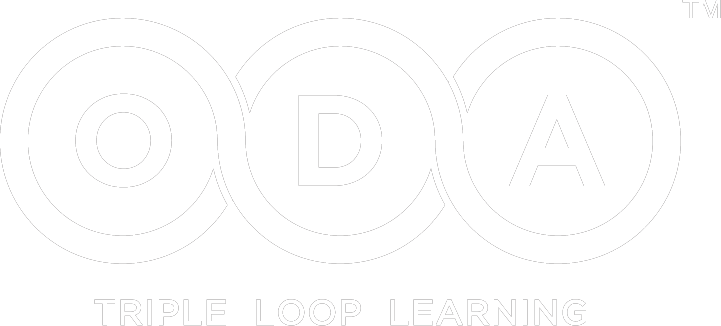An Inside Out Approach: How Air India Can Transform?


Santhosh Babu
Jawaharlal Nehru described Indian public-sector companies as “temples of Modern India” in 1954. After 60 years while there is increased interest to protect temples, churches and mosques, our public-sector companies, many of them, need urgent attention and transformation. Air India, the national carrier is one such organization that has the potential to transform itself into a profitable enterprise.
Public organizations face increasingly complex demands in today’s world. Complex social issues, political interference, deregulation, privatisation, competition from private organizations, customer needs for responsiveness and flexibility are some of the issues.
While there is a clear need for a system-wide change in organizations like Air India, research says that many of the bigger, system-wide transformation efforts failed to achieve results. One of the reasons would be the traditional approach to organizational change that we have been practicing that is not relevant in today’s complex world. So what kind of change initiatives can support large organizations like Air India? I am choosing Air India here because I am a customer and after the airline’s entry into the Star Alliance, I see myself more often on an Air India flight. My recent direct flight from Delhi to Rome on Air India was a delightful experience. The assumptions and methodologies described in this article work well with all organizations and we have followed this approach in the past with a panchayat in Kerala to a telecom company like Bharti Airtel.
Traditional, top-down change models have two major drawbacks: they create resistance, and they require a great deal of time to implement. The other methodology organizations uses is a pilot model where they choose one part of the organization and improve it and then try to replicate that in other parts of the organization. Often, this takes time and also lacks the whole system awareness as each part of an organization is connected to other parts. Imagine you removing some fish from your aquarium, treating them for a fungus infection and putting them back into the aquarium where they got the inflection!
A new model to understand organizations and change
To effectively change today’s organizations we need to have a new metaphor to understand them. The traditional way of looking at organizations is a mechanical way where we try to understand different parts and improve those parts in the hope that they will improve the whole. Instead, we need to look at organizations as complex, adaptive, living systems that are constantly changing. This is the reason change initiatives that involve only one part of the system or one aspect of the system like developing specific skill sets in employees usually fail to produce results. When we understand organizations as living systems, we can see how experts from outside the system trying to transform the system fail when we do not involve the wisdom available inside the system. So it not just about cost cutting, training employees, improving the supply chain and pricing strategies using external experts, it is about trusting that the organization has the necessary knowledge and skills to transform itself and facilitating that. – See more at: http://oda.adsofads.com/insights/an-inside-out-approach-how-air-india-can-transform/#sthash.VGnsD4ol.dpuf
Appreciative way rather than faultfinding
If you look for problems, you will find problems and what you focus will expand. Instead if you look for what is working and what gives energy and what is the core positive potential of the organization, we can expand that and drive the change initiative. When State Bank of India was driving a transformation initiative a couple of years ago, Appreciative Inquiry, a tool that looks at positive potential and future possibilities was used to engage a large number of people in a collective dialogue. Appreciative Inquiry is about dialogue and search for the best in people, their organizations, and the relevant world around them. In its broadest focus, it involves systematic discovery of what gives “life” to a living system when it is most alive, most effective, and most constructively capable in economic, ecological, and human terms.
It involves, in a central way, the art and practice of asking questions that strengthen a system’s capacity to apprehend, anticipate, and heighten positive potential. It centrally involves the mobilization of inquiry through the crafting of the “unconditional positive question” often-involving hundreds or sometimes thousands of people. SBI did appreciative inquiry where each workshop had around 200 people participating to understand the positive core of the organization, to set aspirations and to create strategies that could help them achieve their goals. I used Appreciative Inquiry in a village in Kerala where around 200 people from all walks of life spent three days co-creating a future for the village.
The formula for change
Most practitioners who use whole system change approaches use a formula. Change = Dissatisfaction+Vision+First Steps > Resistance
If the employees are not dissatisfied about the current situation and if there is no pain it would be difficult to create the energy for change. So there has to be a compelling story that everyone can relate to, in the centre of the change initiative. Once there is dissatisfaction, the system should be able to envision a positive future, an end result that is aspirational.
Air India surely has a story that could create pain in all stake holders and collectively can have an aspiration and vision to become a successful and profitable national carrier that focuses on customer delight and quality. It has to start with the system’s ability to take the first steps towards change. The assumption is that organizations have the collective wisdom and ability to move towards change once they take the first steps towards making change possible. All these three things, dissatisfaction, a shared future vision and ability to take first steps will collectively be larger than the resistance to change. And these three things will give the escape velocity to make change happen. If any of these elements is missing, or collectively they are less powerful than the resistance to change, then change will not take place.
Conversations as a vehicle for change
For change to occur many a time individuals do not need new skills and knowledge but a change in perception and collective sense about their realities. So putting a large number of Air India staff through a customer care programme might not be the right way of building customer centricity. Because the same people would have behaved in a customer centric way at some time and that demonstrates they have the skills and knowledge. In a well-planned large group intervention, we make a microcosm of an organization to sit around a table so that each table represents multiple stakeholders and we facilitate a dialogue. This helps them to co-create a shared reality and meaning. Marvin Weisbord, author of Productive Workplaces and creator of Future Search, a methodology for organization change when teaching me about driving change involving the whole system told that to be effective we have to
1). Get the “whole system” in the room. Invite a significant cross-section of all parties with a stake in the outcome.
2). Explore the “whole elephant” before seeking to fix any part. Get everyone talking about the same world. Think globally, act locally.
3). Put common ground and future focus front and centre while treating problems and conflicts as information, not action items.
Engaging the entire organization in the change journey trusting the capability of the system to self manage and transform can drive effective change in Air India provided the socio political will support the transformation. Remember organizations are open systems that constantly interact with external environment and get influenced by it.
Please click here to download the latest OD PUBLICATION.

